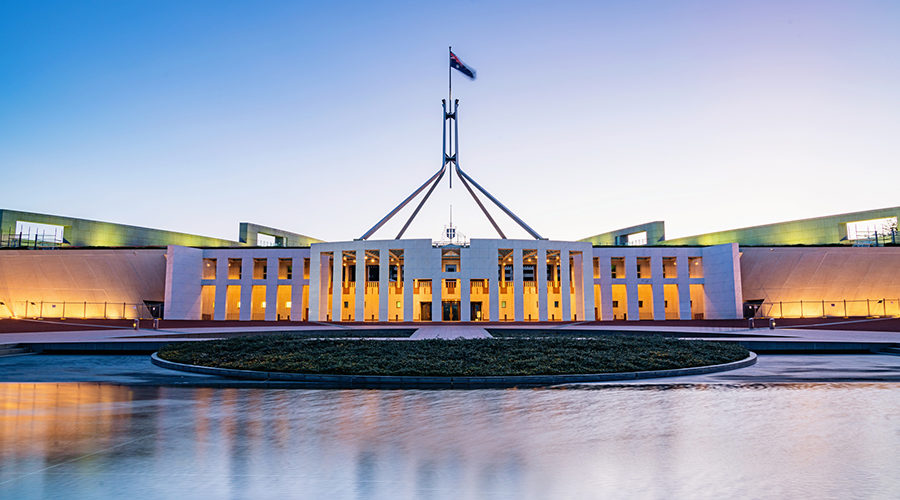Simplicity and certainty in short supply in draft Compliance Guideline PCG 2022/D4
By Andrew O’Bryan and Todd Bromwich
On 2 November 2022, the Commissioner of Taxation released draft practical compliance guideline PCG 2022/D4 Claiming a deduction for additional running expenses incurred while working from home – ATO compliance approach. The guideline outlines a new ‘revised fixed-rate’ method taxpayers can use to calculate deductions for additional expenses incurred while working from home.
PCGs have value and have a clear place within the ATO’s broader tax compliance framework, particularly in the more factually ‘grey’ areas like transfer pricing, where the precise application of the law can be ambiguous. However, we are concerned that Draft PCG 2022/D4 misses the mark in its attempt to simplify matters and provide certainty at the small end of town.
Given the Commissioner can only administer – not make – the law, and PCGs are just a tool in the Commissioner’s compliance armoury, the only apparent solution is to simplify personal work-related deductions in our tax legislation.
What has changed for WFH deductions?
Taxpayers may claim a deduction for additional expenses they (not another person, including a household member) incur as a result of working from home, provided they meet the usual requirements (for example, they are not private or domestic in nature). This may require quite burdensome record-keeping for relatively minor expenses.
In an attempt to simplify matters, the Commissioner has adopted a practical administration approach, whereby taxpayers can alternatively use one or more simplified methods devised by the Commissioner to calculate these deductions.
In prior years, taxpayers could calculate their working from home deductions using two simplified methods:
- shortcut method – Taxpayers could claim 80 cents per hour spent working from home, but could not claim deductions for any other expense incurred due to working from home (only available from 1 March 2020 to 30 June 2022).
- fixed-rate method – This is a hybrid method. Taxpayers could claim 52 cents per hour spent working from home plus additional phone, data and internet expenses incurred as a result of working from home and the decline in value of depreciating assets other than home office furniture and furnishings (only available from 1 July 1998 to 30 June 2022).
From 1 July 2022 onward, a revised fixed-rate method will replace both the shortcut method and the old fixed-rate method. Under this new method, taxpayers may claim as a deduction:
- 67 cents per each hour worked from home, covering all additional costs incurred in relation to energy, internet, telephone, stationery and computer consumables as a result of working from home; and
- the work-related decline in value of depreciating assets, such as laptops and monitors.
The Commissioner promises under Draft PCG 2022/D4 that he ‘will not apply any compliance resources’ to review a taxpayer’s working from home deductions provided:
- they work from home whilst carrying out their employment or business; and
- they incur running expenses of the kind outlined above which are tax deductible; and
- they keep and retain relevant records in respect of the time they spend working from home and the additional running expenses they incur.
So what is Draft PCG 2022/D4 actually worth?
We have three main concerns with Draft PCG 2022/D4.
It doesn’t simplify things all that much
To rely on Draft PCG 2022/D4, taxpayers must keep records showing the total number of hours they worked from home during the income year (estimates will not be accepted – only a total record of hours) and one document (eg an invoice) for each additional running expense incurred during the year.
If they also claim a deduction for the decline in value of depreciating assets, they must keep documents that meet the requirements of Div 900 of the Income Tax Assessment Act 1997 (employees) or s 262A of the Income Tax Assessment Act 1936 (those carrying on a business), and records that demonstrate their income-producing use of these depreciating assets.
While this is somewhat lesser than what would be required if they were to claim their actual additional expenses, the main thing the Draft PCG seems to simplify is what proportion of these costs may be claimed – which is contentious to some who argue it is too low.
It provides limited protection
The simplified method does not exist in the tax legislation. As with all PCGs, the Commissioner is really just promising to not look into these matters in certain circumstances, but is not barred from doing so if an investigation is separately commenced.
If this occurs and the Commissioner and taxpayer disagree about the deductions that many be claimed, the simplified method cannot be relied upon by the taxpayer and they will only be permitted to claim deductions in strict compliance with the law. Relevantly, Draft PCG 2022/D4 provides:
Irrespective of paragraph 5 of this Guideline, if you lodge an objection in relation to your working from home expenses for whatever reason, you cannot rely on this Guideline using the revised fixed-rate method to determine whether you are entitled to a deduction for your expenses. Only the actual expenses you incurred as a result of working from home and for which you have adequate records will be allowed as a deduction.
This is the same way objections regarding working from home expenses calculated using the shortcut method and the fixed-rate method are, and have been, dealt with by the Commissioner. [Emphasis added]
This is legally correct, but by publishing these PCGs and pushing them out to taxpayers, it is arguable that the Commissioner is effectively seeking to have his cake and eat it too. He gains a flexible policy tool to shepherd taxpayers toward particular modes of compliance, but when push comes to shove, he can disclaim any reliance upon it.
This is in the same vein as the Commissioner’s previous administrative practice that a trustee had until 31 August to make a distribution of trust income for the preceding income year. There was no basis in law for it; it was simply an administrative concession.
The language used in Draft PCG 2022/D4 is concerning and undermines the reliability of PCGs as a tool to provide taxpayers with certainty and comfort that their tax affairs are in order and free from scrutiny.
Taxpayers may be being set up to fail
ATO web guidance in most instances conveys to taxpayers that the simplified method may be relied upon absolutely, with no suggestion that taxpayers may be required to adopt a completely different method if the Commissioner reviews their affairs. And how many ordinary taxpayers do you think will read Draft PCG 2022/D4 (or the final version), or have ever heard of a PCG?
This speaks to a lack of clarity in the reliability of this simplified deduction method and the use of PCGs. Taxpayers we have spoken to are confused, saying ‘so the ATO told us to do it one way, but if we get audited, we have to do it a different way?’.
Taxpayers and advisors should be wary of overreliance on the relief promised in Draft PCG 2022/D4 lest they wander into the jaws of the Commissioner. Comments on the draft are due by 30 November 2022 and it will be interesting to see what, if any, changes there are in the final version.
This article was written with the assistance of Samuel Gard, Law Graduate.
Contact
Related practices
You might be also interested in...

Financial Services | 16 Nov 2022
Financial Services in Focus – Issue 74
In this edition, we consider ASIC’s insights from the reportable situations regime, ASIC’s report on wholesale financial market practices, FATF consultations on beneficial owner treatment, and much more.

Tax | 26 Oct 2022
Updated Federal Budget 2022-23: what does it mean for you? Commentary from our tax experts
The 2022-23 Federal Budget (updated following the 2022 Federal election) is light on substantive tax measures. We examine the budget.





